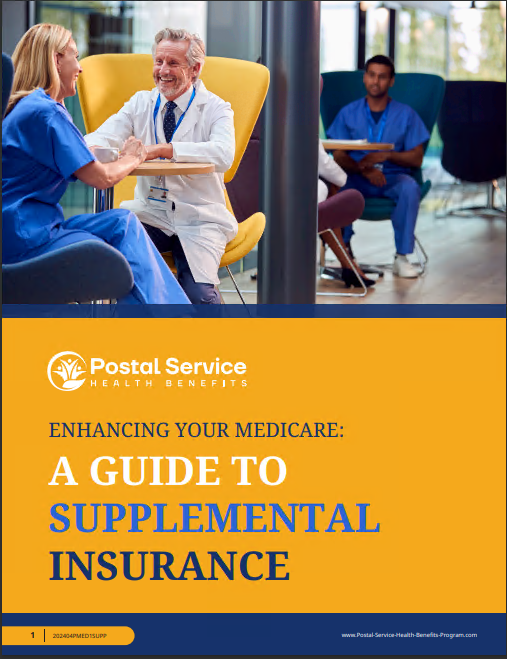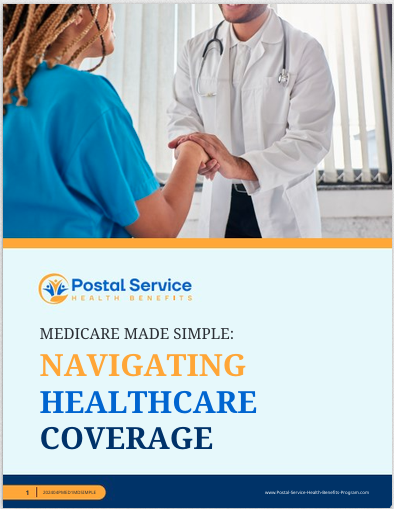Key Takeaways
-
Coordinating Medicare enrollment with your pshb coverage is not optional for most retirees—it’s a requirement that directly affects your access to full benefits.
-
Knowing who pays first (Medicare or your PSHB plan) and meeting enrollment timelines can prevent penalties, gaps in coverage, or even loss of drug benefits.
Medicare and PSHB: Why Coordination Rules Matter More Than Ever
As of January 1, 2025, the Postal Service Health Benefits (PSHB) Program fully replaces the Federal Employees Health Benefits (FEHB) Program for Postal Service retirees and employees. One of the most critical changes that comes with PSHB is how it interacts with Medicare—especially Medicare Part B. This isn’t something you can afford to overlook. Missteps in coordination may cost you benefits, delay your care, or increase your out-of-pocket expenses unnecessarily.
Let’s walk through what the coordination rules actually mean and how you can make them work to your advantage.
Who Must Enroll in Medicare Part B with PSHB
Most Medicare-eligible annuitants and family members enrolled in PSHB must also enroll in Medicare Part B to keep full benefits under their PSHB plan.
You’re required to enroll in Part B if:
-
You are a Postal retiree who turns 65 in 2025 or later and becomes eligible for Medicare.
-
You are a covered family member of a Medicare-eligible PSHB enrollee.
You may be exempt from the Part B requirement if:
-
You retired on or before January 1, 2025.
-
You are already enrolled in Medicare Part A but not Part B, and you qualify for a Part B exception.
-
You live overseas or qualify for care through the VA or Indian Health Service.
If you don’t enroll in Medicare Part B when required, you risk losing access to certain cost-sharing reductions, prescription drug benefits, and integrated care features that come with PSHB.
Timing Is Everything: Don’t Miss These Enrollment Windows
Timing mistakes in Medicare enrollment are among the most common problems Postal retirees face.
Key enrollment periods to know:
-
Initial Enrollment Period (IEP): Starts 3 months before your 65th birthday, includes your birth month, and extends 3 months after.
-
Special Enrollment Period (SEP): If you’re retiring and losing employer coverage, this gives you 8 months from that event to enroll in Part B.
-
General Enrollment Period (GEP): January 1 to March 31 each year. Coverage begins in July and may include late penalties.
If you don’t enroll in Part B during your IEP or a qualifying SEP, and you miss the GEP, you may face lifetime late enrollment penalties and a delay in coverage.
Why Medicare Becomes Primary
Once you enroll in Medicare Part B, Medicare becomes your primary payer for medical services, while your PSHB plan becomes secondary. This coordination rule is what makes combining the two so powerful—but only when executed correctly.
How primary and secondary payer rules affect you:
-
Medicare pays first for covered services.
-
PSHB plans pay remaining eligible costs, often reducing or eliminating out-of-pocket expenses.
-
Without Medicare Part B, your PSHB plan pays as if Medicare did, meaning you pay the difference.
In other words, failing to enroll in Part B means your PSHB plan assumes Medicare is paying first—even when it isn’t. That’s where the out-of-pocket surprises start stacking up.
The Role of Prescription Drug Coverage
All PSHB plans for Medicare-eligible members include integrated Part D drug coverage through an Employer Group Waiver Plan (EGWP).
Here’s what you should know:
-
Enrollment is automatic if you have both PSHB and Medicare Part A and B.
-
If you opt out of Part B or the EGWP, you lose PSHB drug coverage.
-
Re-enrollment in the drug plan is not guaranteed once dropped.
The 2025 cap on out-of-pocket drug costs under Part D—set at $2,000—only applies if you stay enrolled in both Part B and your PSHB prescription drug plan.
Coordination Simplifies Your Costs
When Medicare and PSHB plans coordinate properly, your overall costs for services like hospital stays, doctor visits, and prescriptions are often far lower than relying on one program alone.
Benefits of proper coordination include:
-
Waived deductibles in many PSHB plans when Medicare is primary.
-
Lower coinsurance and copayments.
-
Access to a broader network of providers.
-
Reduced paperwork since providers bill Medicare first.
These benefits only activate when your enrollment is properly aligned. Coordination is not a passive process—you need to actively manage it.
What Happens If You Miss Medicare Enrollment
Failing to enroll in Medicare Part B when required doesn’t just affect your PSHB plan’s coordination. It may jeopardize your entire health coverage setup.
The risks include:
-
Being billed full cost for services Medicare would have covered.
-
Losing access to PSHB drug coverage.
-
Facing late enrollment penalties for Part B (10% for each year delayed).
-
Delays in reinstating proper coverage until the next available GEP.
While your PSHB plan remains in place, it will process claims under the assumption that Medicare is paying its share. If it isn’t, you become the default payer for what Medicare would have covered.
How to Confirm You’re Enrolled Correctly
Avoid assumptions. Always verify your Medicare status directly with the Social Security Administration (SSA) and your PSHB plan.
Checklist to confirm proper enrollment:
-
Are you actively enrolled in both Part A and Part B?
-
Have you received confirmation from SSA and Medicare?
-
Have you reviewed your PSHB plan’s coordination policy?
-
Are your Medicare and PSHB addresses and contact information current?
Take the time to verify these details each year, especially during Open Season or if you move, retire, or become newly eligible for Medicare.
What About Medicare Advantage?
While you can technically enroll in a Medicare Advantage (Part C) plan instead of Original Medicare, this can complicate your PSHB coordination.
Be cautious:
-
PSHB plans are designed to coordinate with Original Medicare (Parts A and B).
-
Some PSHB plans may offer limited or no coordination with Medicare Advantage.
-
Enrolling in a Medicare Advantage plan may block access to PSHB’s integrated drug coverage.
If you’re considering Medicare Advantage, it’s critical to talk to a licensed agent listed on this website to fully understand the downstream effects on your PSHB plan.
Medicare Coordination Works If You Make It Work
Proper Medicare coordination with your PSHB coverage isn’t just paperwork—it’s what keeps your healthcare affordable, accessible, and effective in retirement. From meeting enrollment deadlines to verifying your eligibility and understanding how your plans interact, the steps you take now can prevent costly surprises later.
If you’re nearing Medicare eligibility or have already transitioned, don’t try to guess your way through the process. Speak to a licensed agent listed on this website to make sure your coordination strategy protects both your health and your finances.






